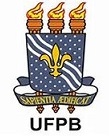“PREPARE THAT THE FLOOR WILL LIGHT”: analysis on the occupation movement of the Federal Institute of Cabedelo/PB
DOI:
https://doi.org/10.46906/caos.n25.54893.p69-97Keywords:
Occupancy; Students; Participation; ResistanceAbstract
This article comes from the Author's final work (2017), which aimed to investigate the School Occupation movement in 2016, with emphasis on the Federal Institute of Paraíba (IFPB) campus Cabedelo. The methodological path refers to the initial access to the research carried out during the occupation of the campus through the Extension Project entitled University and Youth: citizen walkway. Such research was carried out by students XX and XX, linked to the group mentioned above, under the responsibility of teacher XX. The second moment was the realization of a focus group with the students who were part of the occupation, in order to understand how the school-student relationship occurs after the occupation movement. With the mobilization of some theorists such as Castells (2013), Gohn (2011), Poerner (2004) Foracchi (1972), Ianni (1963), Sposito (2000), Pais (1993), one can understand the trajectory of social movements of youth and its dynamics in contemporary times. In this sense, with the results, it becomes noticeable a greater amount of participation by younger students, concentrated in the first year, and, from the reports, a change in the relationship with the school is demonstrated through a greater appropriation of the school space. students participating in this research.
Downloads
Metrics
Published
Issue
Section
License
A Caos é regida por uma Licença da Creative Commons (CC): CC BY-NC 4.0, aplicada a revistas eletrônicas, com a qual os autores declaram concordar ao fazer a submissão. Os autores retêm os direitos autorais e os de publicação completos.
Segundo essa licença, os autores são os detentores dos direitos autorais (copyright) de seus textos, e concedem direitos de uso para outros, podendo qualquer usuário copiar e redistribuir o material em qualquer suporte ou formato, remixar, transformar e criar a partir do material, ou usá-lo de qualquer outro propósito lícito, observando os seguintes termos: (a) atribuição – o usuário deve atribuir o devido crédito, fornecer um link para a licença, e indicar se foram feitas alterações. Os usos podem ocorrer de qualquer forma razoável, mas não de uma forma que sugira haver o apoio ou aprovação do licenciante; (b) NãoComercial – o material não pode ser usado para fins comerciais; (c) sem restrições adicionais – os usuários não podem aplicar termos jurídicos ou medidas de caráter tecnológico que restrinjam legalmente outros de fazerem algo que a licença permita.
Recomendamos aos autores que, antes de submeterem os manuscritos, acessem os termos completos da licença (clique aqui).
















